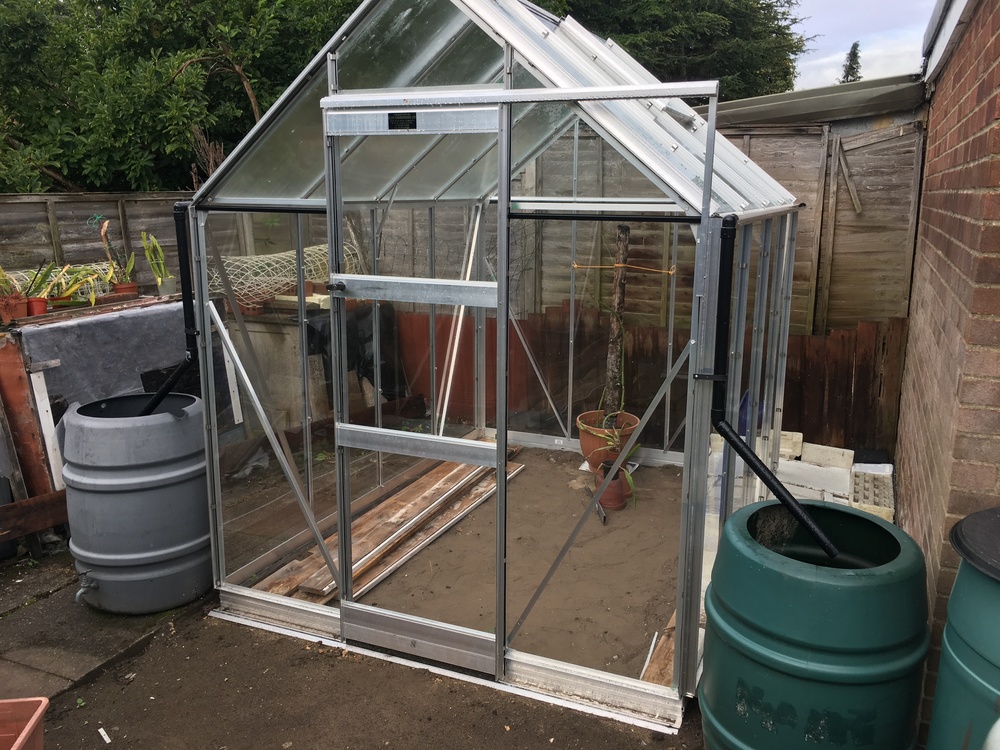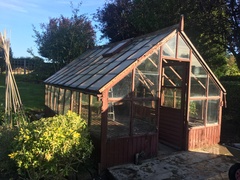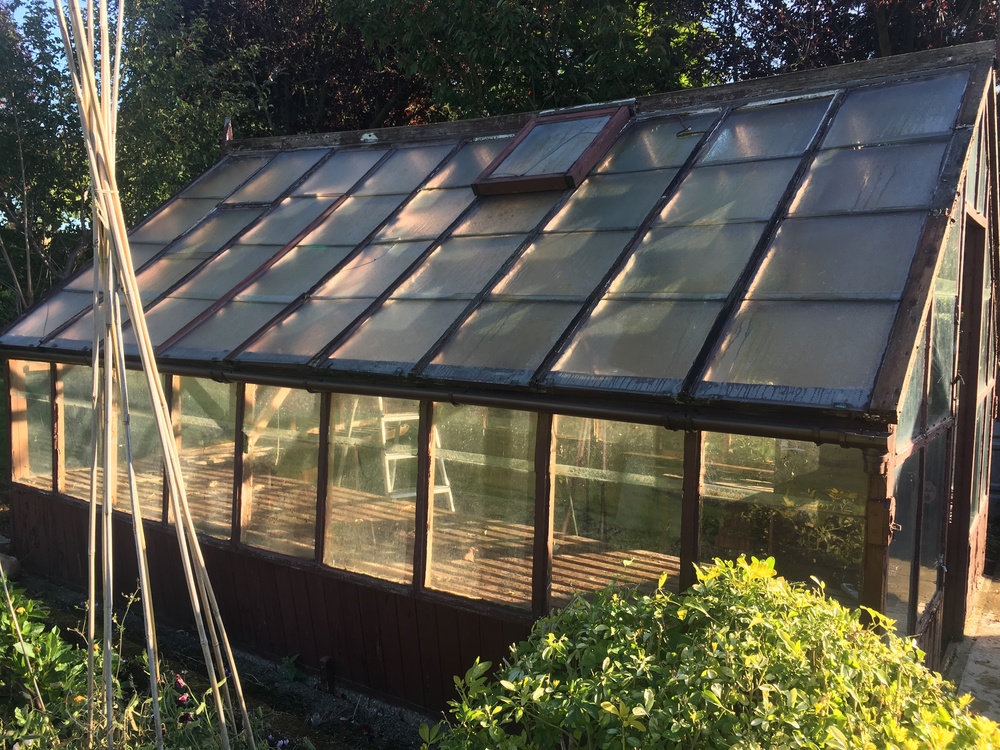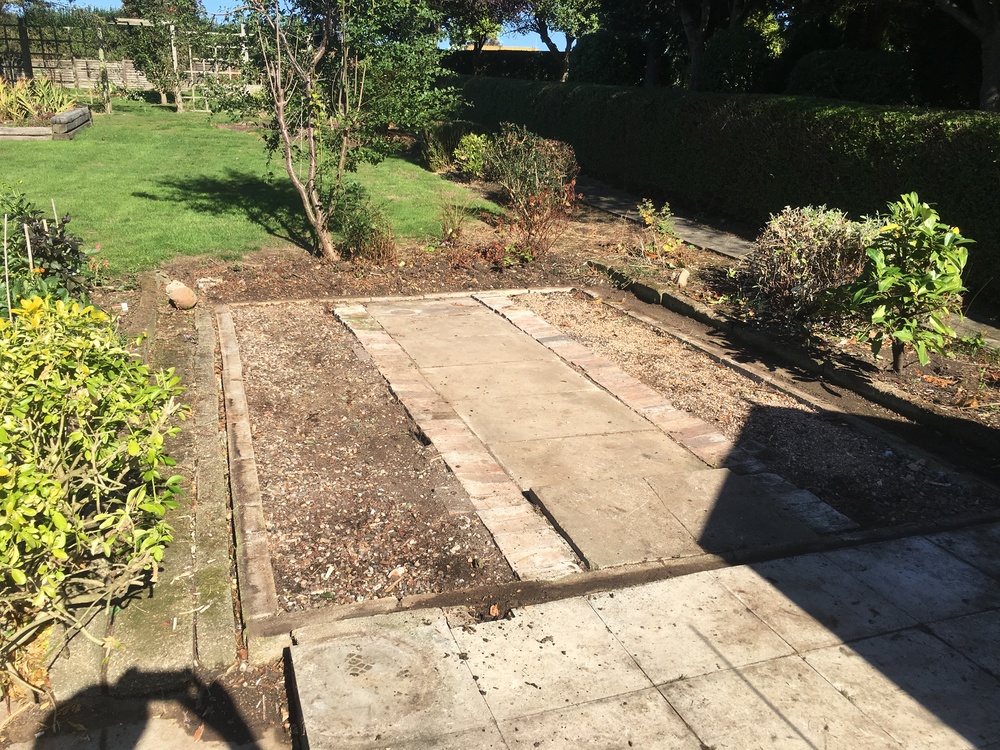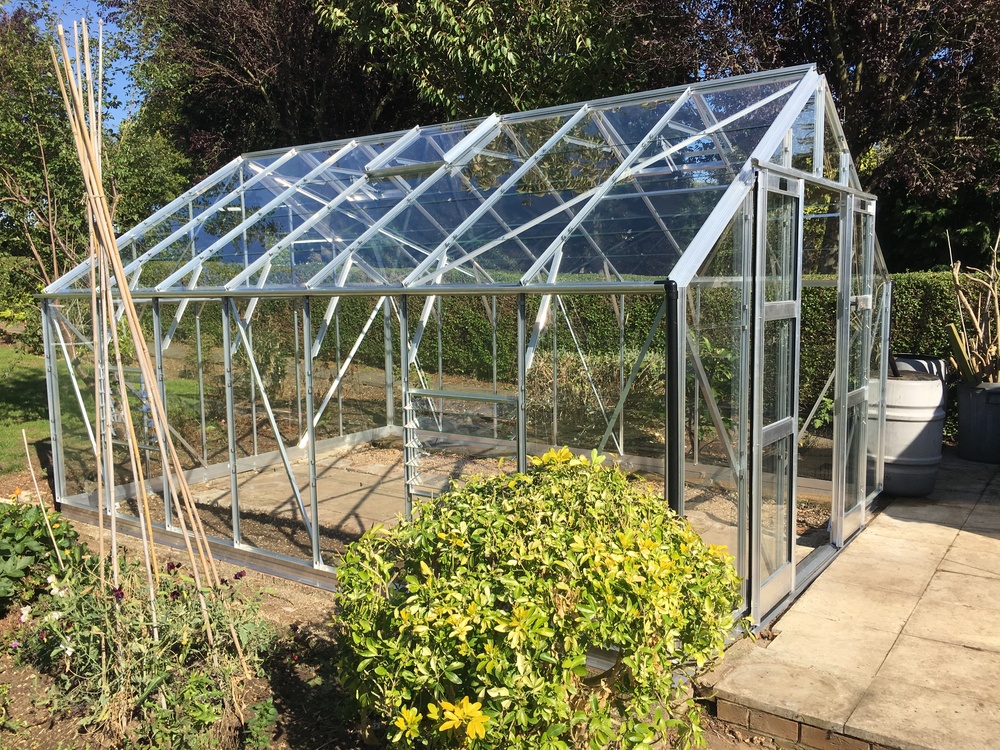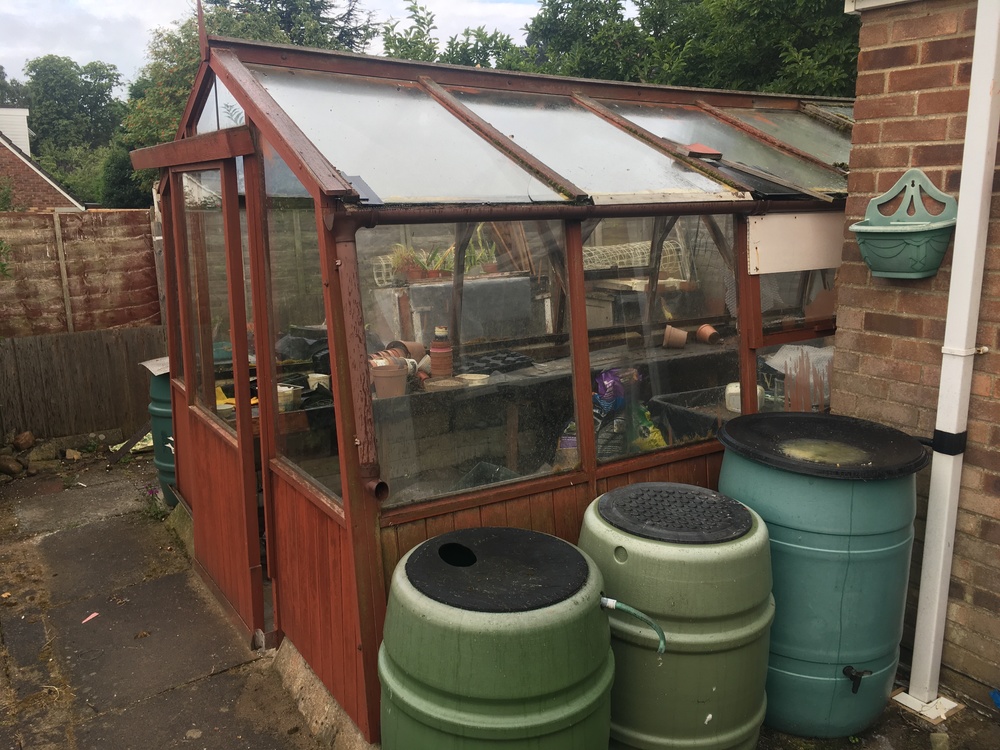
This was an old 14' x 8' Alton Greenhouse owned by a gentleman in his 90s who had lovingly looked after it for many years. It had become well past it's sell by date and any attempt to save it would have been extremely costly not to say dangerous as many of the roof bars were rotten. The size was a little too big for the garden as well so it made sense to downsize with the replacement.
Altons are designed with a very heavy concrete skirt which allows assembly onto firm soil bases, they also sit onto pavers without the need for further anchoring. This particular model was a bit of a mixture of the two and pavers had been laid up to the outside as well as pavers and crazy paving laid in the middle of the greenhouse. As there was not a particuarly flat area of paving to rebuild onto we decided on a simple soil installation of a 6' wide by 8' long Elite High Eave.
The pavers / crazy paving were to go so we ordered an 8 cubic yard skip and dismantled everything into this. There is little to be gained by attempting to save anything as the old glass is impossible to cut to a useful size and even the timber is unsuitable for burning in a woodburner etc. due to the years of preservatives that have been applied.
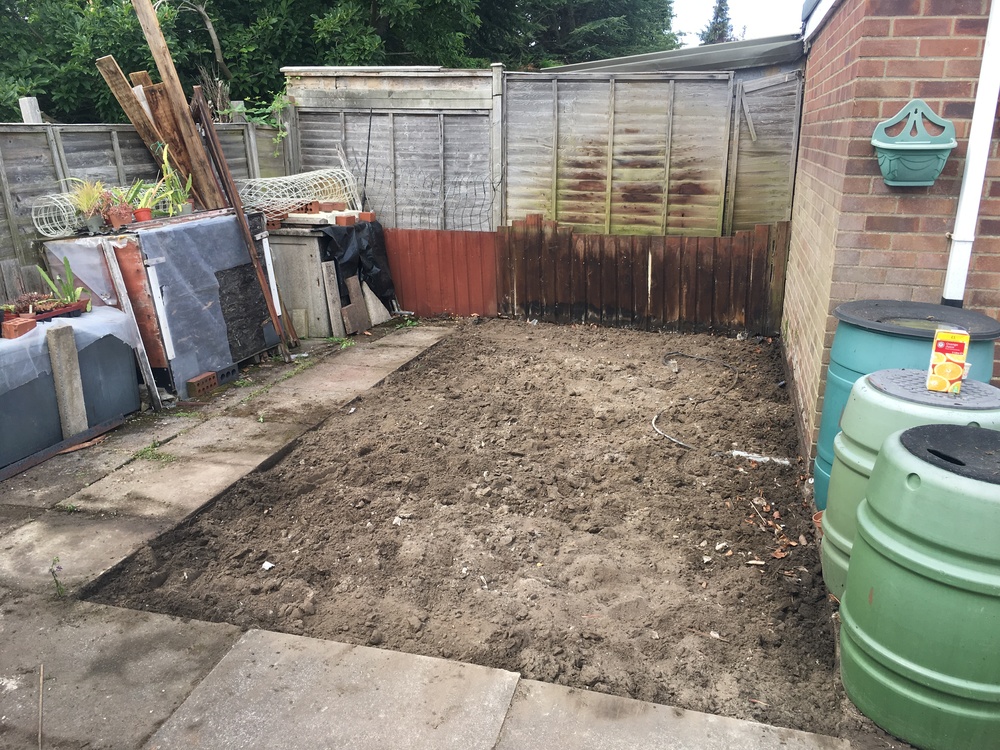
We ended up with a fairly flat soil base which was an excellent start to the new replacement. As the original greenhouse was very close to the garage which made maintenance next to impossible we chose a 6' wide High Eave which was 8' long. This allowed access between the garage for cleaning and also access to the fence behind. As we had reduced the size considerably the greenhouse did not extend beyond the side of the garage and the whole look of the garden improved. The gentleman was reducing the amount of things he was cultivating therefore the new size was of little consequence. Generally the advice is always to go as large as you possibly can but every now and again it makes so much more sense to start again and really evaluate what you want from the greenhouse. A site visit and a trip into the Hull site with the customer was a worthwhile investment in time. The new greenhouse will be there for many years and not demand anything as far as maintenance goes.
